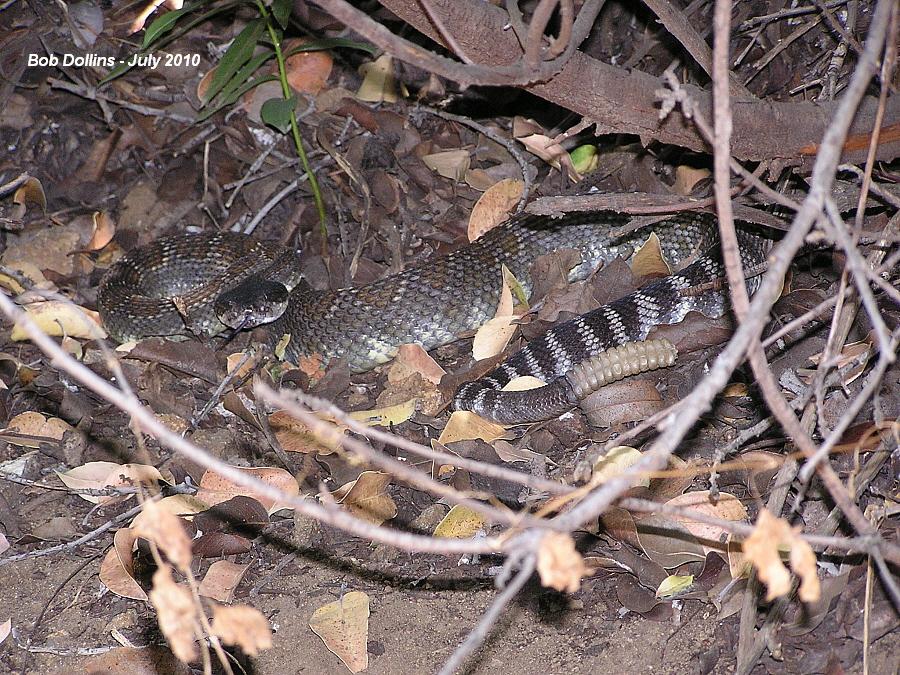Monrovia Canyon Park - Southern Pacific Rattlesnake
(Crotalus oreganus helleri)
 This was a four footer encountered on the Waterfall Trail in August of 2009, just above the "Bear's Den".
This was a four footer encountered on the Waterfall Trail in August of 2009, just above the "Bear's Den".
Click here for a photo of another C.o.helleri
encountered in July of 2010. Click here for a photo of a baby C. o. helleri.
This was a four-plus footer encountered on the Ben Overturff Trail about a 1/4 mile below the Standpipe, which is located at an area known as "The Gap."
This snake's rattle shows 13 segments, even with the tip of the rattle broken off, so its estimated age is between 4 to 6 years old.
A baby Southern Pacific Rattlesnake coiled up on a rock alongside the Bill Cull Ttrail.This snake was about 10-11 inches long and had only a button on the end of its tail, so its estimated age
was around 6 months old. As this species of snake matures, its will change into a darker charcoal-grey or black coloration.
Many people have asked me, "What do I do if I'm bitten by a Rattlesnake?" The following are some basic rules of what to do if you are bitten by a rattlesnake.
Seems simple enough, right? That’s because it is. If you can conceivably get the victim of a snakebite to a hospital,
immobilizing the affected limb and doing so should be the first priority. Again, go immediately to a hospital.
This is the only effective option for venomous snake bites. Now, you may be thinking: What if there isn’t a hospital nearby?
When professional medical care is absolutely not a possibility, the situation gets grim. There really isn’t much you can do to fix a snakebite without antivenom,
but you can at least slow the spread of the toxin. Here’s what you can do if hospital care is not available:
- Immobilize the wound, and wash with soap and water as seen above.
- Note the time of the bite for use by medical help when they arrive (Write it on area next to the bite, if necessary).
- Keep the victim calm and stationary — minimize heart rate and stop all physical activity.
- If possible, call the California Poison Control Center at 1-800-222-1222. It is open 24/7 and an adviser can provide help over the phone.
- Do not apply ice or a tourniquet. Do not give the victim alcohol, caffeine or painkillers.
- Do not elevate the wound — in fact, do the opposite. Have the victim sit or lie down with the bite site below the level of the heart.
- Apply a clean bandage to the wound, and hope for the best. Some snake bites are “dry bites” with no venom injection, so they may be survivable without professional treatment.
- If neurotoxic venom has been injected, and you are certain no medical care or antivenom is available, there is very little that can be done. Get comfortable and try to signal for rescue.





